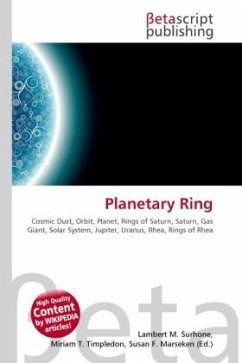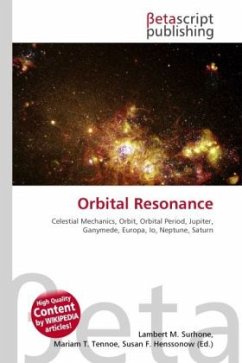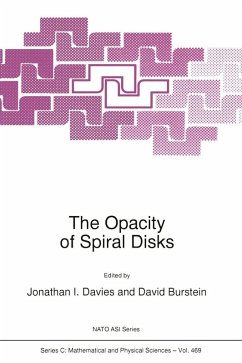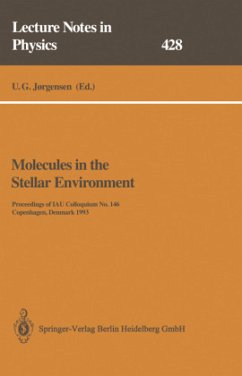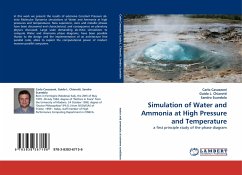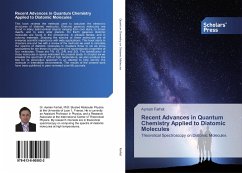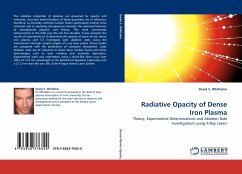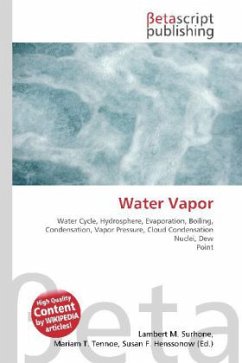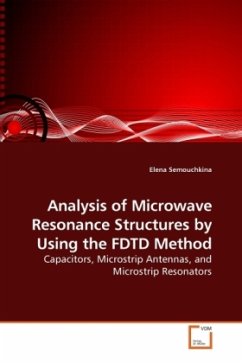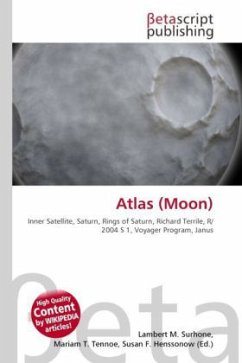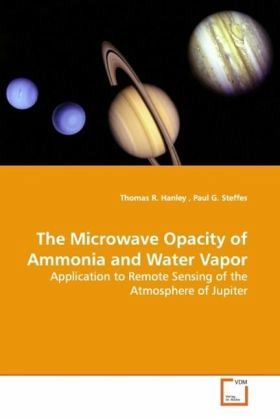
The Microwave Opacity of Ammonia and Water Vapor
Application to Remote Sensing of the Atmosphere of Jupiter
Versandkostenfrei!
Versandfertig in 6-10 Tagen
39,99 €
inkl. MwSt.

PAYBACK Punkte
20 °P sammeln!
Measurements of water vapor (H2O) and ammonia (NH3) in the deep atmosphere of Jupiter are best accomplished via passive microwave emission measurements. For these measurements to be accurately interpreted, however, the hydrogen and helium pressure-broadened microwave opacities of H2O and NH3 must be well characterized, a task that is very difficult if based solely on theory and limited laboratory measurements. Therefore, accurate laboratory measurements have been taken under a broad range of conditions that mimic those of the Jovian atmosphere. These measurements, performed using a newly redes...
Measurements of water vapor (H2O) and ammonia (NH3)
in the deep atmosphere of Jupiter are best
accomplished via passive microwave emission
measurements. For these measurements to be
accurately interpreted, however, the hydrogen and
helium pressure-broadened microwave opacities of H2O
and NH3 must be well characterized, a task that is
very difficult if based solely on theory and limited
laboratory measurements. Therefore, accurate
laboratory measurements have been taken under a
broad range of conditions that mimic those of the
Jovian atmosphere. These measurements, performed
using a newly redesigned high-accuracy system, and
the corresponding models of microwave opacity that
have been developed from them comprise the majority
of this work. The models allow more accurate
retrievals of H2O and NH3 abundances at Jupiter,
which will enable a greater understanding of the
concentration and distribution of H2O and NH3 in the
Jovian atmosphere. This will reveal much about how
Jupiter and our solar system formed and how similar
planets could form in other solar systems, even
planets that may be hospitable to life.
in the deep atmosphere of Jupiter are best
accomplished via passive microwave emission
measurements. For these measurements to be
accurately interpreted, however, the hydrogen and
helium pressure-broadened microwave opacities of H2O
and NH3 must be well characterized, a task that is
very difficult if based solely on theory and limited
laboratory measurements. Therefore, accurate
laboratory measurements have been taken under a
broad range of conditions that mimic those of the
Jovian atmosphere. These measurements, performed
using a newly redesigned high-accuracy system, and
the corresponding models of microwave opacity that
have been developed from them comprise the majority
of this work. The models allow more accurate
retrievals of H2O and NH3 abundances at Jupiter,
which will enable a greater understanding of the
concentration and distribution of H2O and NH3 in the
Jovian atmosphere. This will reveal much about how
Jupiter and our solar system formed and how similar
planets could form in other solar systems, even
planets that may be hospitable to life.



